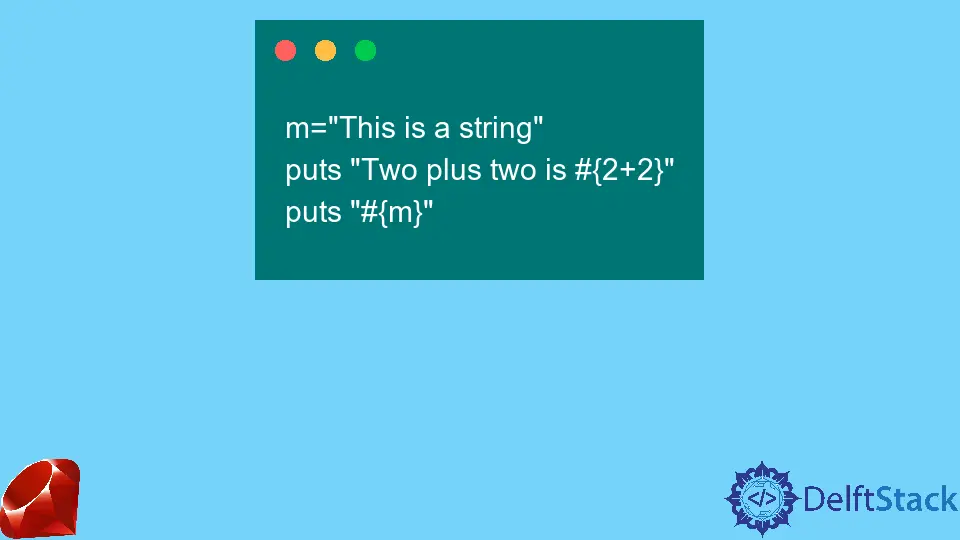Ruby의 이중 인용 문자열에 대한 리터럴
MD Aminul Islam
2023년6월21일
Ruby
Ruby String

프로그램을 생성하는 경우 변수 값을 출력으로 넣거나 변수 안에 문자열을 표시해야 할 수 있습니다.
Ruby에서는 이를 위해 #{}를 사용합니다. #{}는 변수 값을 출력 텍스트에 넣는 데 사용됩니다.
이 기사에서는 Ruby에서 #{}의 사용을 살펴보고 주제를 더 쉽게 만들기 위해 주제와 관련된 예를 살펴봅니다.
Ruby에서 #{}에 대한 예
아래 예제에서는 Ruby에서 #{}를 사용하는 방법을 설명합니다. 아래 예제 코드를 살펴보십시오.
m="This is a string"
puts "Two plus two is #{2+2}"
puts "#{m}"
위의 예에서 우리는 먼저 #{} 내부에서 간단한 계산을 수행하고 결과를 출력과 함께 첨부했습니다.
puts "Two plus two is #{2+2}"
그 후 아래 라인을 통해 변수 m의 값을 출력했습니다.
puts "#{m}"
이제 전체 프로그램이 아래 출력을 표시합니다.
Two plus two is 4
This is a string
튜토리얼이 마음에 드시나요? DelftStack을 구독하세요 YouTube에서 저희가 더 많은 고품질 비디오 가이드를 제작할 수 있도록 지원해주세요. 구독하다
작가: MD Aminul Islam
Aminul Is an Expert Technical Writer and Full-Stack Developer. He has hands-on working experience on numerous Developer Platforms and SAAS startups. He is highly skilled in numerous Programming languages and Frameworks. He can write professional technical articles like Reviews, Programming, Documentation, SOP, User manual, Whitepaper, etc.
LinkedIn